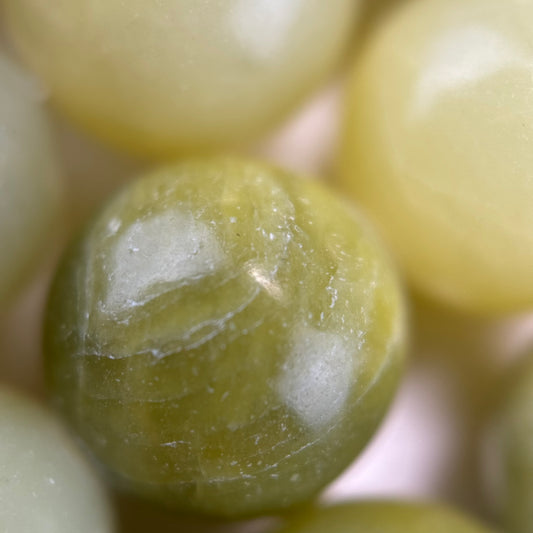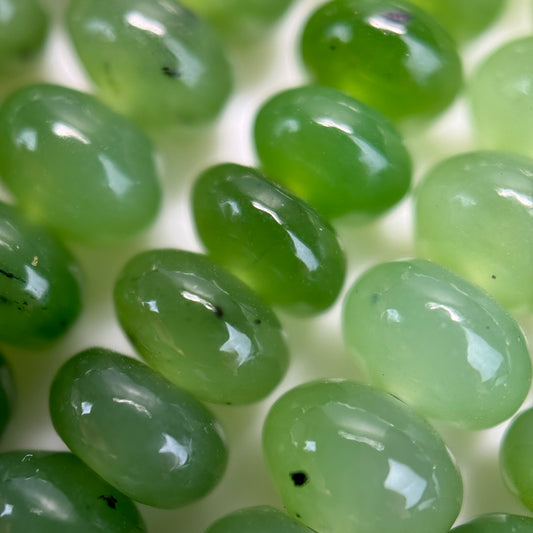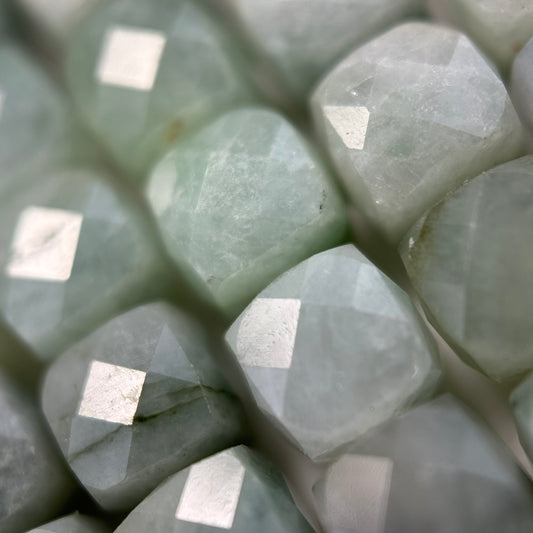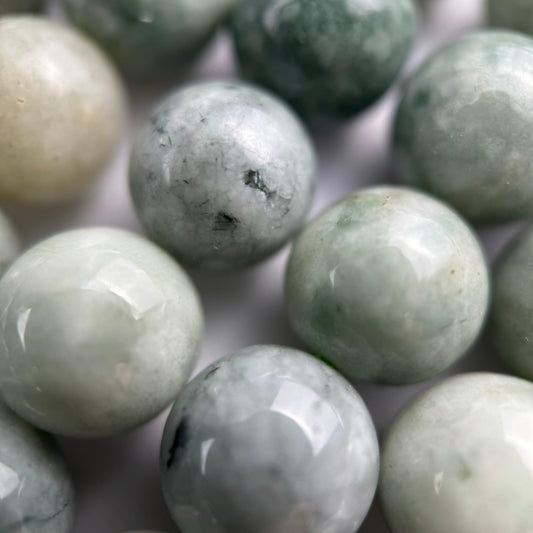Jade
Jade
Jade is a beautiful and highly valued gemstone that has captivated cultures around the world for thousands of years. Known for its rich green hues, jade is often associated with purity, serenity, and longevity. The stone is prized not only for its visual appeal but also for its symbolic significance in many traditions.
Two distinct minerals comprise what is commonly known as jade: nephrite and jadeite. Both minerals are prized for their toughness and striking colors, but jadeite is rarer and typically more valuable. Jade has been used in jewelry, sculptures, and ceremonial objects, particularly in East Asia and Central America.
Jade Stone
The term “jade stone” refers broadly to the gemstone formed from either nephrite or jadeite minerals. While these two minerals differ chemically and physically, they share a similar appearance and historical use, which is why both are commonly grouped under the name “jade.”
Jade stone is admired for its durability and its ability to be finely carved into intricate shapes. It ranges in color from deep greens to white, yellow, and even lavender, offering a variety of aesthetic choices for jewelry and decorative art.
Burma Jade (Burmese)
Burma jade, also known as Burmese jade, is one of the most prized varieties of jadeite in the world. Originating from Myanmar (formerly Burma), this jade is famed for its intense, translucent emerald-green color often referred to as "Imperial Jade."
Due to its rarity and exceptional quality, Burma jade commands high prices on the gemstone market. Historically, it has been a favorite among Asian royalty and collectors, prized for its beauty and cultural significance.
BC Jade
BC jade refers to nephrite jade found primarily in British Columbia, Canada. This region is one of the world’s largest sources of nephrite and has a long history of indigenous use for tools, art, and ceremonial items.
The jade from BC is known for its creamy to deep green colors, often with a smooth, waxy texture. It is popular among artisans and jewelry makers due to its strength and unique regional characteristics.
Hetian Jade
Hetian jade is a type of nephrite jade mined in the Hetian region of Xinjiang, China. It has been highly valued for centuries and is often considered one of the finest jades globally due to its softness and subtle luster.
Typically white or pale green, Hetian jade is famous for its smooth texture and is commonly used in traditional Chinese carvings and jewelry. It symbolizes purity and virtue in Chinese culture.
Peace Jade
Peace jade is a modern trade name given to certain jade stones believed to carry calming and harmonizing energies. Often used in metaphysical circles, it is associated with tranquility and balance in emotional and spiritual wellbeing.
While not a specific type of jade mineral, peace jade is popular in jewelry for those seeking its reputed spiritual benefits, especially in meditation and healing practices.
Guatemalan Jade
Guatemalan jade primarily refers to jadeite sourced from Guatemala, known for its rich variety of colors ranging from deep green to lavender and even mottled tones. The ancient Maya civilization highly prized this jade, using it in rituals, jewelry, and burial artifacts.
This jade is especially significant historically and culturally, symbolizing life, fertility, and power. Today, Guatemalan jade remains popular among collectors and jewelry designers.
Jade Origin
Jade originates mainly from two minerals: nephrite and jadeite. Nephrite is more common and found in locations such as Canada, China, and Russia. Jadeite is rarer and primarily sourced from Myanmar, Guatemala, and parts of the United States.
The formation of jade involves high-pressure metamorphic processes that result in dense, tough crystals. The geographical origin can influence the stone’s color, texture, and value, making provenance important for collectors and jewelers.
Jade Color
Jade comes in a wide spectrum of colors, with green being the most well-known and sought-after. However, it also appears in white, yellow, lavender, black, and even red hues. The specific color depends on the mineral composition and trace elements.
The intensity and translucency of jade’s color play a crucial role in its valuation. Deeper, more vibrant greens, especially in jadeite, are the most valuable. Other colors, like lavender and black, have their own dedicated markets and spiritual associations.
Black Jade
Black jade is a striking variety that features a deep, opaque black color. It is typically nephrite but can also be found as jadeite. Black jade is often used in jewelry and carvings to symbolize protection and grounding.
This dark jade variety is prized for its sleek and elegant appearance, making it a popular choice for masculine jewelry or statement pieces. It is also believed to absorb negative energy and provide strength to the wearer.
Purple Jade
Purple jade, sometimes called lavender jade, ranges from soft lilac tones to deeper violet hues. It is primarily a jadeite variety and is highly prized in Asian markets for its delicate and unique color.
Aside from its beauty, purple jade is associated with spiritual insight, calmness, and creativity. It is a rarer form of jade and often features in fine jewelry and ornamental carvings.
Jade Beads
Jade beads are a popular form of the stone used extensively in jewelry making. These beads come in many shapes and sizes and can be faceted or smooth, showcasing the stone’s natural beauty and color.
Because of jade’s toughness, beads made from this gemstone are durable and ideal for everyday wear. Jade bead necklaces, bracelets, and malas are also favored for their aesthetic appeal and metaphysical properties.
Jade Gemstone Meaning
Jade symbolizes purity, serenity, and wisdom across many cultures. It is often regarded as a stone of harmony, believed to bring balance to the body and mind, as well as prosperity and good luck.
In ancient Chinese culture, jade was considered the “Stone of Heaven” and was used in everything from jewelry to religious artifacts. It continues to be valued today for both its beauty and spiritual significance.
Jade Jewellery
Jade Bracelet
Jade bracelets are classic pieces of jewelry that highlight the smooth texture and vibrant colors of the stone. They are worn both for their beauty and their protective qualities, often seen as talismans against harm.
These bracelets can range from simple polished bangles to intricately carved designs, suitable for both casual and formal occasions. Many cultures believe wearing jade bracelets promotes health and emotional balance.
Jade Ring
Jade rings showcase the gemstone as a centerpiece and are favored for their unique blend of elegance and tradition. The stone’s hardness makes it suitable for rings that can be worn daily without losing their polish.
Jade rings are often designed with silver or gold settings, enhancing the stone’s natural glow. They are popular gifts symbolizing friendship, love, and good fortune.
Jade Necklace
Jade necklaces provide a stunning display of the gemstone’s color and form. Whether crafted from a single pendant or multiple beads, these necklaces are versatile and meaningful.
Many jade necklaces feature carved symbols or motifs believed to enhance spiritual protection or attract positive energy, making them cherished items in many cultures.
Jade Earrings
Jade earrings offer a subtle yet striking way to incorporate this gemstone into everyday style. They come in various forms, including studs, drops, and hoops, often paired with precious metals.
Wearing jade earrings is thought to bring calmness and clarity to the wearer, making them both a fashion statement and a spiritual accessory.
Jade Pendant
Jade pendants often serve as focal points in jewelry, showcasing the stone’s unique colors and patterns. These pendants can be simple polished pieces or intricately carved with meaningful symbols.
Often worn close to the heart, jade pendants are believed to offer protection, wisdom, and prosperity. They are popular both as personal talismans and as gifts.
Frequently Asked Questions
What is jade?
Jade is a precious gemstone known for its rich green colors and toughness. It includes two minerals: nephrite and jadeite, both valued for their beauty and durability.
What is the difference between nephrite and jadeite?
Nephrite is more common and typically softer, found in many regions including Canada and China. Jadeite is rarer, usually harder, and prized for its vibrant colors, especially emerald green.
Where does jade come from?
Jade is primarily sourced from Myanmar, China, Guatemala, Russia, and Canada. The type of jade and its quality often depend on the geographic origin.
What colors does jade come in?
Jade occurs in a variety of colors including green, white, yellow, black, purple, and lavender. The most prized color is a translucent emerald green known as “Imperial Jade.”
What is Burma jade?
Burma jade is jadeite from Myanmar, famous for its intense green color and high quality. It is considered some of the finest jade available.
What is BC jade?
BC jade is nephrite jade found in British Columbia, Canada. It is known for its toughness and comes in colors from creamy white to deep green.
What is Hetian jade?
Hetian jade is a nephrite jade from the Hetian region of China, valued for its smooth texture and pale colors, often white or pale green.
What is black jade?
Black jade is usually nephrite or jadeite with a deep black color. It is popular for jewelry and believed to have protective properties.
What is purple jade?
Purple jade, often lavender jade, is a rare form of jadeite known for its unique violet hues and spiritual significance.
What are jade beads?
Jade beads are rounded or shaped pieces of jade used in jewelry making. They highlight jade’s color and durability, often used in bracelets and necklaces.
What does jade symbolize?
Jade symbolizes purity, harmony, and protection. It is believed to bring luck, balance emotions, and promote health and longevity.
How is jade used in jewelry?
Jade is fashioned into rings, bracelets, pendants, earrings, and necklaces. Its toughness allows intricate carving, making it popular for both casual and formal jewelry.
Is jade valuable?
Yes, jade can be very valuable, especially high-quality jadeite from Myanmar. The value depends on color, translucency, size, and craftsmanship.
How to identify real jade?
Real jade feels cool to the touch, has a smooth surface, and produces a distinct sound when tapped. Professional gem testing is recommended for certainty.
Can jade be dyed?
Yes, some lower-quality jade is dyed to enhance its color. Authentic, untreated jade is more valuable and preferred by collectors.
How to care for jade jewelry?
Clean jade jewelry with warm soapy water and a soft cloth. Avoid harsh chemicals and extreme temperature changes to maintain its luster and strength.
What is peace jade?
Peace jade is a trade name for jade stones believed to have calming spiritual properties. It is popular in healing and meditation practices.
What is Guatemalan jade?
Guatemalan jade is jadeite sourced from Guatemala, historically used by the Maya. It comes in green, lavender, and mottled colors with cultural significance.
What is the hardness of jade?
Jadeite rates about 6.5-7 on the Mohs hardness scale, while nephrite is slightly softer at 6-6.5. Both are very tough and durable gemstones.
Can jade break?
Though tough, jade can break or chip if struck hard. It is more resilient than many stones but should still be handled with care.
What is imperial jade?
Imperial jade is the highest quality jadeite with a vivid emerald green color and high translucency. It is extremely rare and expensive.
How to tell the difference between jade and other green stones?
Jade has a unique smooth texture and specific gravity. Testing by a gemologist is the best way to distinguish it from stones like serpentine or aventurine.
Are jade rings durable?
Yes, jade rings are durable and suitable for daily wear due to the stone’s toughness. Proper care can keep them looking beautiful for years.
What spiritual benefits does jade have?
Jade is believed to attract luck, promote harmony, enhance wisdom, and protect against negative energy in many spiritual traditions.
Can jade be worn daily?
Absolutely. Jade is a tough gemstone ideal for daily wear in jewelry such as rings, bracelets, and pendants.
What does black jade symbolize?
Black jade is often associated with protection, grounding, and absorbing negative energies. It is favored in spiritual practices for these reasons.
Is purple jade rare?
Yes, purple jade is less common than green jade and is prized for its unique color and spiritual properties.
What types of jade jewelry are popular?
Popular jade jewelry includes bangles, rings, pendants, necklaces, and earrings, often featuring smooth polished stones or intricate carvings.
How old is jade as a gemstone?
Jade has been valued for over 7,000 years, especially in Chinese and Mesoamerican cultures, for its beauty and symbolic meanings.
Can jade improve health?
Many cultures believe jade promotes physical healing and emotional well-being, though scientific evidence is limited. It remains popular in holistic practices.

























